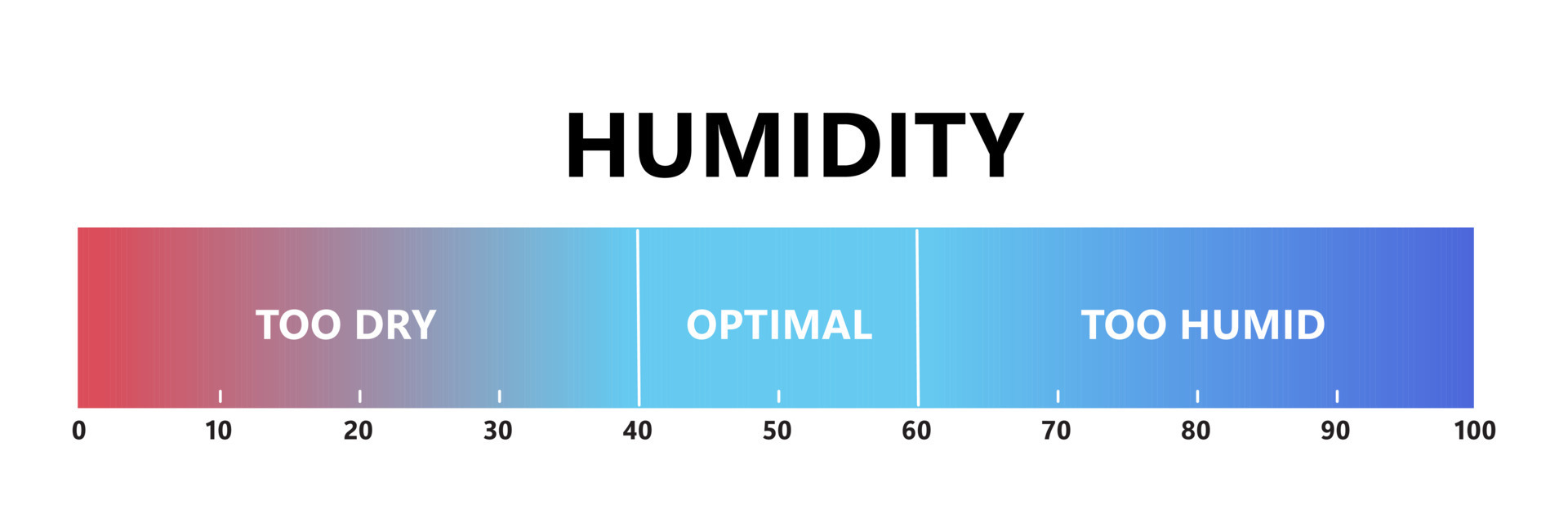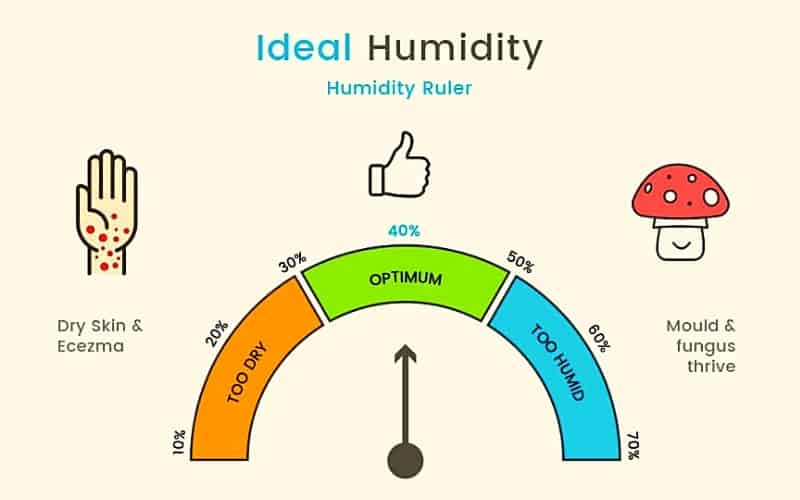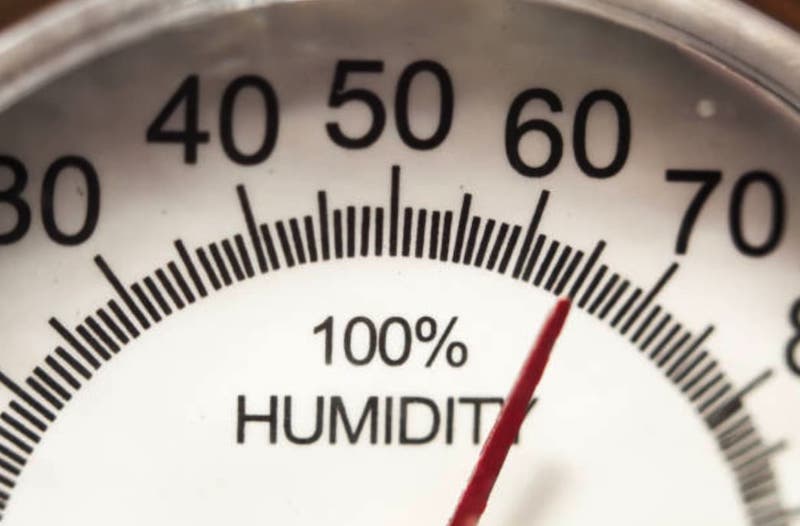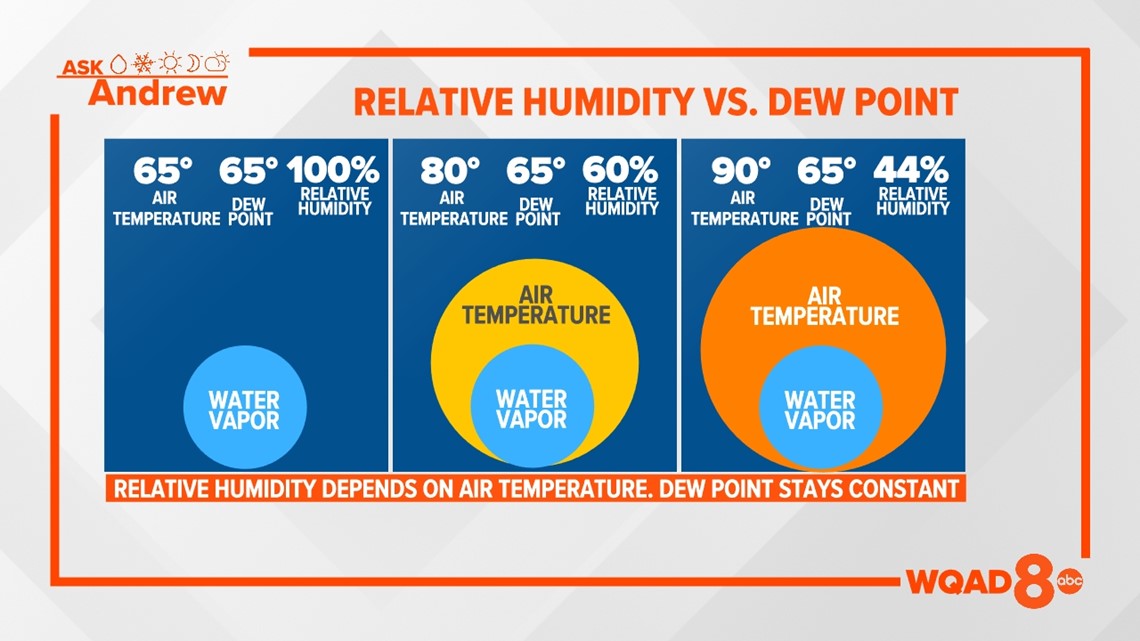What Percent Is Considered High Humidity
.jpg?width=3508&name=Humidity level chart (1).jpg)
Frequently Asked Questions: Understanding High Humidity
Humidity, the amount of moisture in the air, significantly impacts our comfort, health, and even the structural integrity of our homes and buildings. But what humidity levels are considered too high? This FAQ will answer your most pressing questions about high humidity and its effects.
Q: What is humidity, and why does it matter?
Humidity refers to the amount of water vapor present in the air. It's usually expressed as relative humidity (RH), which is the percentage of moisture in the air compared to the maximum amount the air can hold at a given temperature. Humidity matters because it affects:
- Comfort: High humidity makes it harder for sweat to evaporate, making you feel hotter and stickier.
- Health: High humidity promotes the growth of mold, mildew, and dust mites, which can trigger allergies and respiratory problems.
- Building Structure: Excessive humidity can lead to wood rot, corrosion, and other structural damage.
Q: What percentage of humidity is considered high?
Generally, above 60% relative humidity is considered high. Ideally, you want to maintain indoor humidity levels between 30% and 50% for optimal comfort and health. When humidity consistently exceeds 60%, you’re more likely to experience negative consequences. However, the perceived impact of high humidity can vary depending on temperature. Even a reading slightly above 50% in warmer temperatures can feel quite uncomfortable.
Q: Why is the 30-50% range considered ideal for indoor humidity?
The 30-50% range strikes a balance. Here's why it's recommended:
- Prevents Mold Growth: Mold thrives in humid environments. Keeping humidity below 60% inhibits its growth.
- Discourages Dust Mites: Dust mites, a common allergen, also prefer humid conditions.
- Reduces Condensation: Lower humidity levels minimize condensation on windows and other surfaces, preventing water damage.
- Promotes Comfort: This range allows for efficient evaporation of sweat, helping you feel cooler.
- Avoids Dryness: Conversely, humidity levels below 30% can lead to dry skin, irritated sinuses, and increased susceptibility to respiratory infections.
Q: What problems can high humidity cause in my home or facility?
High humidity can wreak havoc on your property and health. Here are some common issues:
- Mold and Mildew Growth: As mentioned, these thrive in damp environments, leading to musty odors, stained surfaces, and potential health problems.
- Wood Rot: Excessive moisture can cause wood to rot, weakening structural components like floors, walls, and furniture.
- Corrosion: Metals can corrode and rust in humid conditions, affecting appliances, pipes, and other metallic fixtures.
- Pest Infestations: Some pests, like cockroaches and silverfish, are attracted to humid environments.
- Damage to Belongings: High humidity can damage fabrics, books, electronics, and other belongings.
- Increased Allergies and Respiratory Issues: Mold, mildew, and dust mites can trigger allergies, asthma, and other respiratory problems.
- Unpleasant Odors: Dampness can lead to musty, stale odors that are difficult to eliminate.
- Increased Energy Bills: High humidity makes your air conditioner work harder, increasing energy consumption.
- Peeling Paint and Wallpaper: Moisture can cause paint and wallpaper to peel and blister.
Q: How can I measure the humidity level in my home?
Measuring humidity is easy and inexpensive. You can use a hygrometer, also sometimes called a humidity meter. These devices are readily available at hardware stores and online retailers. There are two main types:
- Analog Hygrometers: These use a mechanical mechanism to measure humidity and display it on a dial. They are generally less accurate than digital models but don't require batteries.
- Digital Hygrometers: These use electronic sensors to measure humidity and display it on a digital screen. They are typically more accurate and often include features like temperature readings and memory functions.
For the most accurate reading, place the hygrometer away from direct sunlight, drafts, and heat sources. Monitor humidity levels in different areas of your home, especially in bathrooms, kitchens, and basements, which tend to be more humid.
Q: What can I do to lower high humidity levels in my home or facility?
Lowering humidity is crucial for maintaining a healthy and comfortable environment. Here are several strategies:
- Use a Dehumidifier: A dehumidifier removes moisture from the air. Choose a model that is appropriately sized for the area you need to dehumidify.
- Run Your Air Conditioner: Air conditioners naturally remove moisture as they cool the air.
- Improve Ventilation: Open windows and doors (when outdoor humidity is lower) to allow fresh air to circulate. Use exhaust fans in bathrooms and kitchens to vent moisture outside.
- Fix Leaks: Repair any leaks in your plumbing or roof to prevent water from entering your home.
- Seal Cracks and Gaps: Seal cracks and gaps around windows, doors, and pipes to prevent moisture from seeping in.
- Dry Clothes Outdoors: Avoid drying clothes indoors, as this releases moisture into the air. If you must dry clothes indoors, use a clothes dryer that vents to the outside.
- Take Shorter, Cooler Showers: Hot, long showers create a lot of steam.
- Cover Pots While Cooking: Covering pots while cooking reduces the amount of steam released into the air.
- Ensure Proper Drainage: Make sure your gutters and downspouts are clean and properly direct water away from your foundation.
- Consider a Whole-House Dehumidifier: For persistent humidity problems, a whole-house dehumidifier can be installed as part of your HVAC system.
- Basement Waterproofing: If you have a damp basement, consider basement waterproofing to prevent moisture from entering.
Q: Is there a connection between temperature and high humidity?
Yes, temperature and humidity are closely related. Warm air can hold more moisture than cold air. This is why a relative humidity of 60% feels much more uncomfortable on a hot day than on a cool day. The heat index is a measure that combines air temperature and relative humidity to give you a better sense of how hot it actually feels. A high heat index can be dangerous, as it can increase the risk of heatstroke and other heat-related illnesses.
For example, a temperature of 85°F with 60% humidity might feel like 95°F. This highlights the importance of considering both temperature and humidity when assessing comfort and potential health risks. Even if the temperature seems bearable, high humidity can make conditions much more oppressive.
Q: When should I be concerned about high humidity and seek professional help?
While many high humidity issues can be managed with the tips mentioned above, there are situations where professional assistance is recommended. Consider seeking professional help if:
- You have persistent mold or mildew growth despite your best efforts to control humidity. Mold remediation specialists can safely and effectively remove mold and address the underlying moisture problems.
- You suspect structural damage due to high humidity, such as wood rot or corrosion. A qualified contractor can assess the damage and recommend appropriate repairs.
- You have chronic health problems that are exacerbated by high humidity, such as allergies or asthma. A doctor can help you manage your symptoms and recommend strategies to improve your indoor air quality.
- You are unable to identify the source of the high humidity. A home inspector or HVAC technician can help you identify hidden leaks or other sources of moisture.
- You are considering installing a whole-house dehumidifier or other major humidity control system. An HVAC professional can help you choose the right system for your needs and ensure it is properly installed.
By understanding the effects of high humidity and taking proactive steps to control it, you can create a healthier, more comfortable, and more durable living or working environment. Remember that maintaining humidity levels between 30% and 50% is generally considered ideal. If you consistently experience humidity levels above 60%, it's time to take action.










